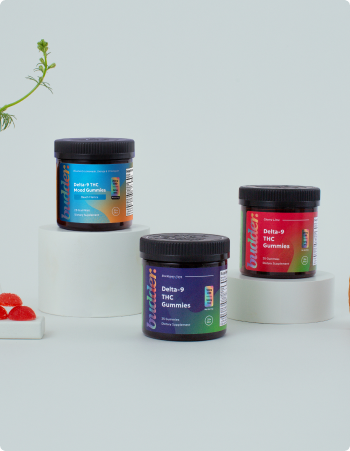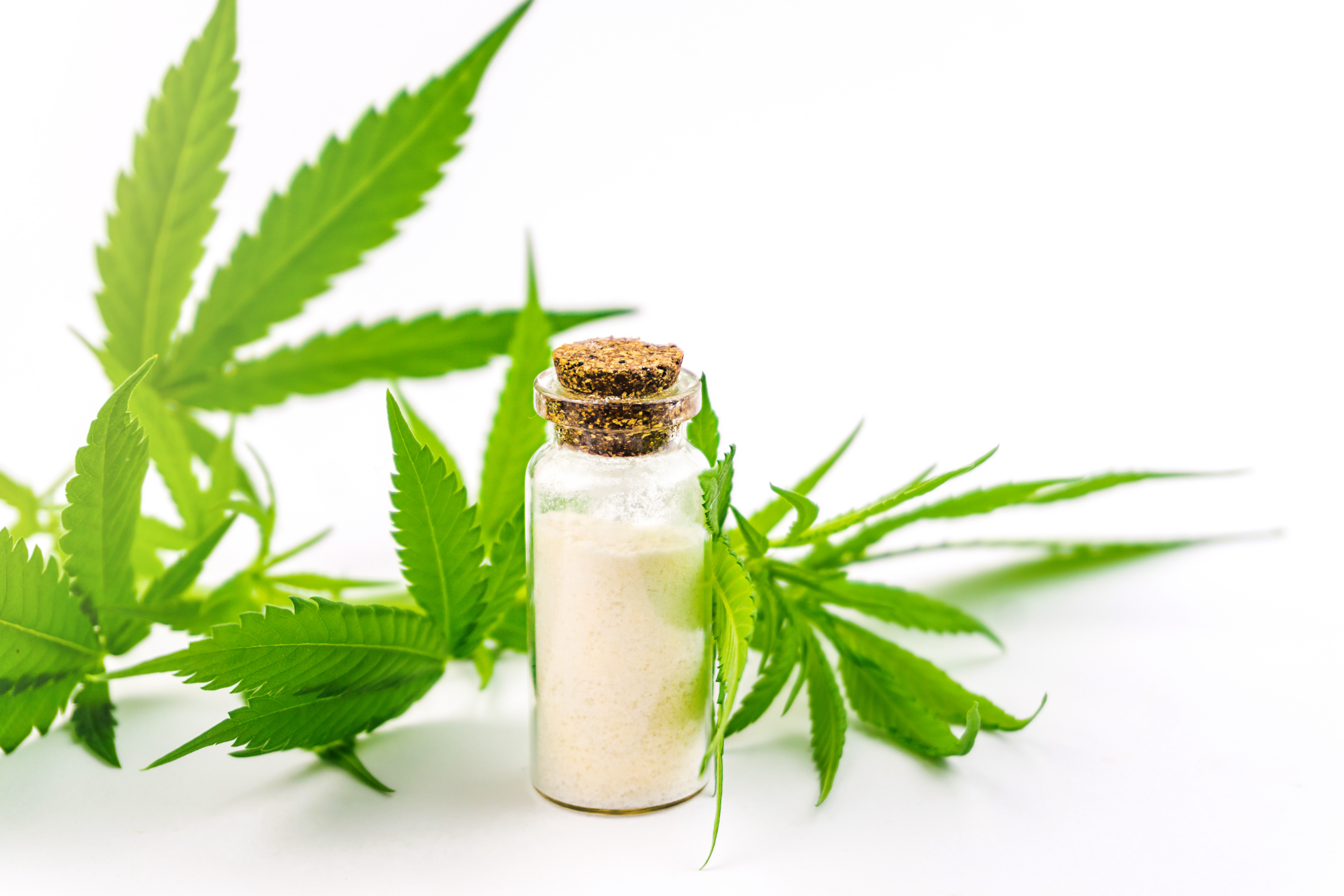These days, you can’t walk past a convenience store without seeing a flyer for CBD or drive on a highway without seeing a picture of a hemp leaf. It wasn’t too long ago that people rarely thought of hemp. Worse, if they did think of this plant, many held the now highly praised plant in negative regard. While a positive outlook toward hemp is just reaching the forefront of today’s minds, this member of the cannabis family has a long, complicated history with humankind. In this comprehensive history of hemp, Joy Organics takes a look at the ups and downs of public perception the hemp plant has experienced over the last few centuries.
Where Did Hemp Originate?
Believe it or not, hemp is one of the first industrial plants on earth. Currently, the oldest relic known to humankind is hemp fabric. According to the Columbia History of the World, this ancient piece of cloth was believed to have been created by man in 8,000 B.C.
Historians believe that hemp originated in areas known today as China and Taiwan. Our ancestors cultivated hemp to use as fiber. They manipulated the rugged plant to create textiles, rope and shoes.
As our ancestors made advancements in communication, they started to record their findings. Mentions of hemp first popped up in a 1550 B.C. piece known as The Ebers Papyrus. This influential text is the first known manuscript on ancient Egyptian medicine.

Hemp’s importance to our early ancestors was made even more clear in 1500 B.C. An ancient Hindu text known as The Vedas described hemp as one of the five essential plants.
A story in Bhagavad-gita explains that the god Shiva got into a fight with his family. Angry, he went into a field to take a nap. When he arose, he noticed that he felt a lot calmer. Lord Shiva became intrigued by the plants surrounding him. He tasted them and noted that he felt even more relaxed. Religious historians believe this plant was hemp.
Hemp Crosses Borders
Our ancestors began to populate the earth exponentially. Competition over resources caused humans to look for land of their own. As these people migrated, so did the hemp plant.
While families colonized new areas, distinctive cultures started to take form. People began using hemp in unique ways and documented its uses in their own languages. For instance, the Assyrian Empire recorded the use of hemp in spiritual acts in 750 B.C.
During this time, babies had a difficult time surviving after birth. The residents of present-day Iraq used hemp to help with “banishing the ghosts of childbirth,” as translated from pieces of an ancient tablet.
The Scythians, who lived in what is present-day Ukraine and Russia, also used hemp. These nomadic people wove the fiber to create clothing. As the Scythians made their way closer to Greece, Greek writers noted around 450 B.C. that the nomads were also smoking the plant.
The Many Uses of Hemp
Hemp thrives in warmer climates. That’s why it makes sense that the plant most likely originated in modern-day southeastern Asia. It’s also a hardy plant; some strains can survive in climates as cold as 40° F. It was only logical that ancient civilizations would take this versatile plant wherever they went.
This plant played a pivotal role in how we communicate to this day. As the Han Dynasty rose to prominence, one eunuch of the Emperor tried to use hemp to get in the ruler’s good graces. As legend has it, Ts’ai Lun faked his death. Prior to this, he beat the fibers of hemp down to create a thick, flat surface. Those papers were placed around Lun during his funeral ceremony, then lit on fire.
As the fire burned on, Lun “rose up from the dead.” He hoped to impress the Emperor with this charade. Ts’ai Lun credited hemp for his “resurrection.” Instead, he should have been credited for inventing paper.
We have more recorded histories that showcase the many ways our ancestors used hemp. Botanist and Greek physician Dioscorides wrote a four-volume medical text called De Materia Medica. In the piece, he noted that hemp was ideal for rope. He also used its juices for earaches and ate the seeds for nourishment.
Hemp Flourishes in Europe

Hemp was also used historically to record daily events. This practice went to the next level by 1150 A.D. The Moors, who resided in present-day Spain and Portugal, invented the first mill to make hemp paper. By 1151, the first paper mill was operating at full force on the Iberian Peninsula.
Seeing its durability firsthand, Spain started to use hemp as a bartering mechanism. They ramped up cultivation of the plant, becoming the largest producer of hemp in the area.
At this point, the French noticed the plant’s durability. They used hemp to create tents and awnings for shelter. The Romans were using it for medicine.
As the British empire gained prominence and territory, they wanted to make sure there was enough of this staple crop to go around. In 1533, King Henry VIII made it law that every landlord set aside one acre of land for hemp cultivation. Queen Elizabeth doubled down on King Henry’s law in 1563. She levied a £5 fine to anyone who didn’t comply.
Hemp Comes to the Americas
As the 1600s rolled along, America was seeing a large influx of European settlers. In 1606, a French botanist, Louis Hebert, landed in what is now Nova Scotia, Canada. He planted the first known European hemp plant in North America.
The first European settlement was in present-day Virginia. In 1619, the colony known as Jamestown declared a law that every farmer must grow hemp. In 1631, Massachusetts followed suit, as did Connecticut the following year.
Hemp was so important in early America that it was considered a form of tender up and down the Atlantic coast. In fact, you could be jailed in colonial Virginia if you didn’t grow the crop on your land. By 1776, America became an independent nation dependent on hemp.
Hemp in the Free World
The hemp crop was so crucial to early America that it’s the very fabric our forefathers used and wore. For example, Thomas Paine’s Common Sense credited hemp for supplying the troops with an abundance of “cordage,” or rope.
While the Declaration of Independence was drafted to protect the states that fell under the American banner, Spain still had control over what is now Mexico, California and Chile. King Charles IV started using the Mississippi River to export hemp goods abroad. This practice made California a hotbed for hemp. Ironically enough, this state would also begin the fall of hemp in America.
Hemp Gets Political
Leaders knew there was big money to be made with hemp. That’s why the most powerful nations were doing everything they could to profit from it. While hemp was booming in the Americas, it was igniting a battle between the influential powers-that-be in Europe.
Following the 1807 Treaties of Tilsit, the French and Russian Empires agreed to transform from enemies to partners. The twosome used their influence to convince other countries to cut ties with England. During this time, Russia supplied 90% of the hemp used by England’s navy. Russia was looking at a substantial financial loss by ending trade with Britain.
Instead, Russia decided to ignore the treaty. They continued to trade with England, causing tensions between Napoleon of France and Csar Alexander of Russia. Britain paid American ships gold upfront and asked them to conduct business with Russia on Britain’s behalf. Early Americans obliged and flourished due to this intervention by England.
However, the partnership with Great Britain came to a screeching halt in 1812. Britain kept laying more restrictions on America with each passing deal. Eventually, the country withheld about 80% of Russia’s hemp from the Americas.
Americans decided they had had enough. They started to grow hemp in Kentucky and figured out trade routes within their own boundaries. Thus the war on hemp began.
The Prohibition of Hemp

In 1850, the US Pharmacopeia listed hemp as a botanical plant used in formulas to help patients. Cannabis was a regular ingredient in many over-the-counter remedies at the local pharmacy.
All of this would continue until 1913. In a state where hemp cultivation was once thriving, California became the first state to ban cannabis. During this time, many of the people migrating from Mexico smoked the cannabis plant. In some instances, it caused a psychoactive effect.
Just as the U.S. was on the cusp of banning alcohol in 1920, other mind-altering substances were also frowned upon. Southern states also didn’t like the idea of people from south of the border settling in their lands, which is why 30 states prohibited cannabis by 1936.
In 1937, the federal government passed the Marihuana Act. This legislation imposed a heavy tax on any product that contained this common fiber. World War II saw a boost in hemp production, but it was all but phased out after the war was over.
Laboratories started conjuring up pharmaceuticals while cotton became the clothing plant of choice. Houses were made of bricks and logs instead of hemp tents. Using a plant that could potentially cause psychoactive effects seemed unnecessary. In the 1970s, the War on Drugs saw the birth of the Controlled Substances Act. It was here that cannabis was classified as a schedule 1 drug, which placed hemp in the same category as heroin and painkillers.
Differences Between Hemp and Marijuana
In the midst of the controversy surrounding cannabis and the War on Drugs, researchers were still busy analyzing what hemp actually was. As science evolved, scientists discovered cannabinoids. In the 1960s, they began to understand cannabidiol (CBD). It was believed that this compound may have caused some of the benefits described by our ancestors. Not long after, scientists pinpointed tetrahydrocannabinol (THC). They realized that this was the compound that gives marijuana its psychoactive side effects.
Furthermore, scientists started to distinguish the differences between hemp and marijuana. These plants are both members of the Cannabis sativa genus. However, the marijuana plant is abundant in THC while hemp has much lower levels, rarely triggering any mind-altering experiences, if at all.
Unfortunately, it seemed too late for hemp. The larger population already favored the replacements for this plant so it remained popularly classified as the same “drug” as its cousin.
Hemp Becomes Available For All
Hemp would remain federally illegal for a century. However, the rise of medical cannabis changed the perception of many. This movement was spearheaded, ironically enough, by California in 1996, but the movement didn’t gain steam until 2014. More people realized that hemp products could help them maintain a healthy lifestyle without the mind-altering effects of marijuana. States started to have a change of heart.
Slowly hemp extracts, clothing and rope became available in a number of states. In 2014, a new Farm Bill allowed the growth of hemp as long as the plant had less than 0.3% THC and the grower was part of a hemp pilot program in their state.
By 2016, the demand for hemp products went sky high. This outcry of support for hemp led to the Farm Bill. Using a hemp pen, Mitch McConnell signed the Farm Bill.

With the Farm Bill, the sky’s the limit for hemp. Not only is it used in everything from lotions to tinctures, but you can also purchase hemp biomass. This sustainable plant is the green choice that keeps on giving. The future is looking bright for hemp, and we can’t wait to see where it goes!
After reading this comprehensive history of hemp, do you have any questions about hemp or CBD? Let us know! Our customer support team would love to hear from you.
Thanks for reading! To show how much we appreciate you, we’re going to give you 16% off your next order. Just use code READER16 at checkout!




























































Join in on the Conversation
Your email address will not be published. Once your comment is approved, it will be published.